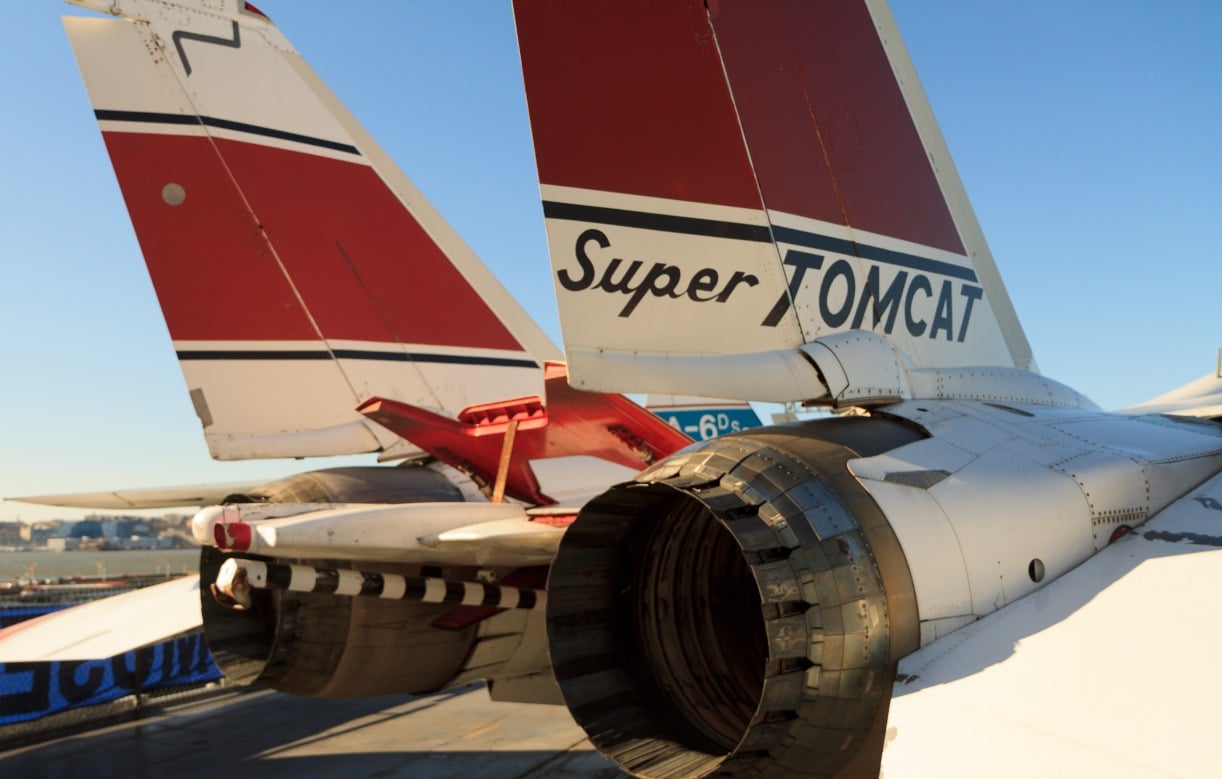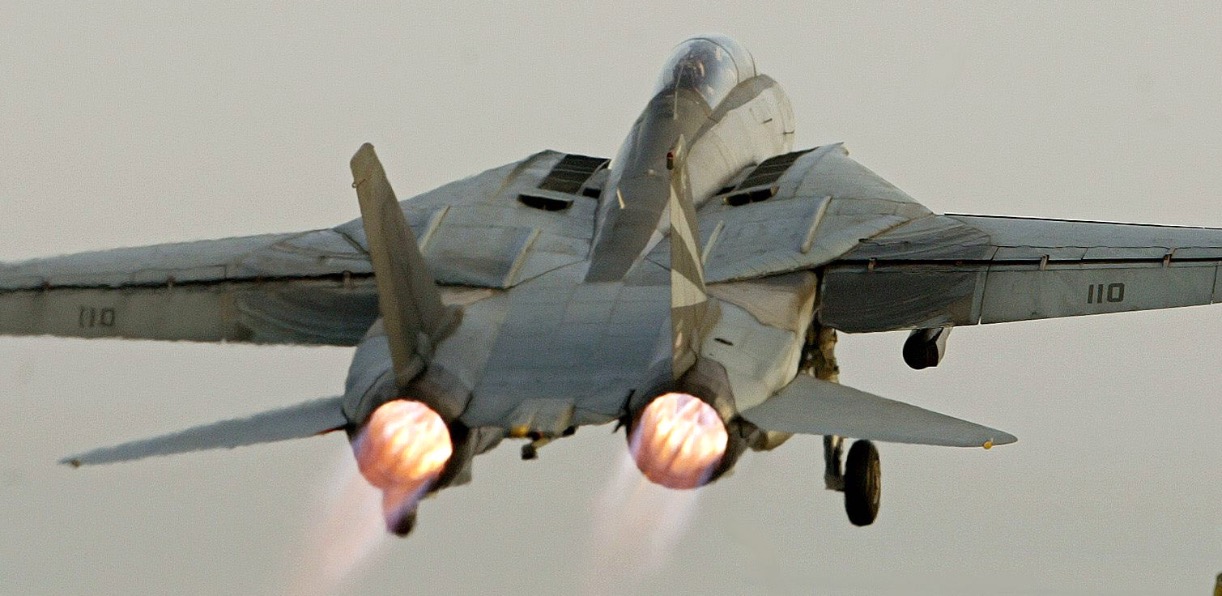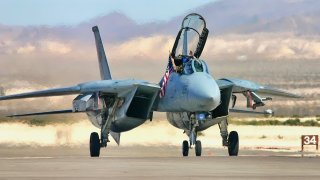The F-14 Tomcat: What Made This a Powerhouse Boils Down to 1 Word
Perhaps the F-14 Tomcat’s most revered capability was its long range of approximately 1,600 miles. Two Pratt & Whitney engines providing more than 20,000 pounds of static thrust powered the platform. This energy allowed the fighter to engage hostile targets from as far as 90 miles away.
The F-14 Tomcat Is Missed Due to Its Range: The U.S. Navy currently faces a limitation in its strike capabilities due to the short range of its Boeing F/A-18E/F Super Hornets, which can fly approximately 400 miles with a full weapons load, extendable to about 500 miles with in-flight refueling. This range constraint is concerning as China's anti-ship ballistic missile technology advances. Historically, the Navy relied on aircraft like the F-14 Tomcat, introduced in the 1970s, which boasted a much longer range of around 1,600 miles and advanced weaponry.

-The Tomcat's extended reach would be highly valuable today against anti-access/area denial (A2/AD) threats. With the retirement of the F-14 and focus on the Hornet and F-35C, the Navy now needs new platforms or strategies to fill this critical long-range strike role.
Why the U.S. Navy Misses the F-14 Tomcat's Long-Range Power
The U.S. Navy’s fleet of strike aircraft lacks a key capability: range. The Navy’s Boeing F/A-18E/F Super Hornets can fly roughly 400 miles with a nearly full weapons load. That range can stretch to about 500 miles via a buddy pod alongside another F-18 fighter. As Beijing’s anti-ship ballistic missiles continue to evolve, this limited range could be a problem.
The Navy used to rely on fleets of A-6 bombers and F-14 Tomcat fighters, both of which could fly to much longer ranges than their successors. The Super Hornet may be a more capable aircraft in many regards, but the service’s rediscovered need for longer-range strike abilities probably has it missing the Tomcat.
Introducing the F-14 Tomcat
The F-14 Tomcat was conceptualized in the late 1950s. The Navy sought a long-range, high-endurance interceptor capable of protecting its carrier battle groups. Under the direction of Secretary of Defense Robert McNamara, the Navy joined the Air Force in the joint Tactical Fighter Experimental program, or TFX. While the airframe resulting from TFX could operate as both a fighter-bomber and an interceptor, it lacked adequate range, speed, and payload.

Manufacturer Northrop Grumman was ultimately awarded the contract to produce its F-14 prototype, a twin-engine, air-to-air fighter that could reach a top speed of Mach 2.2.
The first Tomcat took its maiden flight in 1970, and the fighter reached initial operational capability three years later. The fighter was equipped with AIM-54B and later AIM-54C air-to-air missiles, and it could carry up to half a dozen Phoenix missiles. Additionally, the Tomcat was armed with a General Electric Vulcan M61A 120 mm gun with 675 rounds of ammunition. The F-14 boasted advanced sensors and countermeasures, and each Tomcat was fitted with the AN/ALQ-126 jammer. The Raytheon AN/APG-71 digital multimode radar was also incorporated in the platform, providing non-cooperative target identification among other capabilities.
Why the Navy Misses the Tomcat’s Range
Perhaps the Tomcat’s most revered capability was its long range of approximately 1,600 miles. Two Pratt & Whitney engines providing more than 20,000 pounds of static thrust powered the platform. This energy allowed the fighter to engage hostile targets from as far as 90 miles away.

If the Tomcat were still in service today, it would be a huge asset as the Navy contends with the growing threat of China’s anti-access/area denial (A2/AD) capabilities. While the concept of an upgraded Super Tomcat was considered at one time, the service ultimately decided to dedicate all of its efforts to the Hornet, and later to the F-35C.
Without the F-14 Tomcat’s range and its prowess to direct against A2/AD threats, the Navy will have to rely on other means and new platforms to fill this defensive role.
About the Author: Maya Carlin, Defense Expert
Maya Carlin, National Security Writer with The National Interest, is an analyst with the Center for Security Policy and a former Anna Sobol Levy Fellow at IDC Herzliya in Israel. She has by-lines in many publications, including The National Interest, Jerusalem Post, and Times of Israel. You can follow her on Twitter: @MayaCarlin.
Image Credit: Creative Commons and/or Shutterstock.


